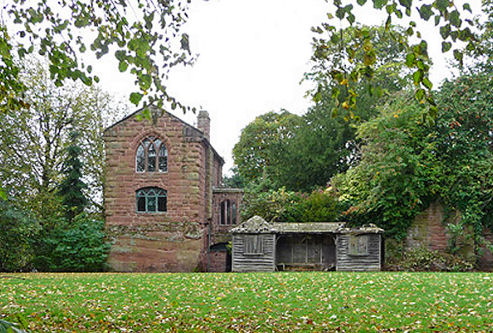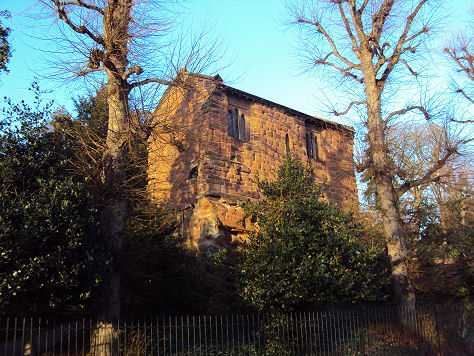Anchorite's Cell
OS grid ref:- SJ409660
The curious and picturesque Anchorite's Cell, otherwise known as the Hermitage, stands on on a sandstone outcrop between the River Dee and St John the Baptist's Church in Chester. The red sandstone building dates back to the fourteenth century.

Built as a religious retreat for a monk or a hermit, it belonged to St John's Church until the Reformation.
Local legend states the cell was the final home of the last Saxon King Harold after he escaped alive from the battle of Hastings! The twelfth century chronicler Gerald of Wales records:-
"Harolde had many woundes, and lost hys left eye wyth the strooke of an arrowe, and was overcome; and escaped to the countrye of Chester, and lived holylie, as men troweth, an Anker's life, in Sayne Jame's cell, fast by Saynte John's church, and made a good end, as yt was knowen by hys last confession".
Legend further states that the son of William the the Conqueror, King Henry I (1068-1135) visited the hermitage in Chester and apparently found an ancient, one-eyed man there!

During its long history, the cell has also been a grain warehouse, the meeting place of the Company of Shoemakers and, more recently, an architect's office, it is now a private home.
